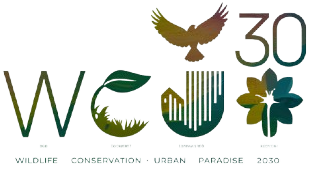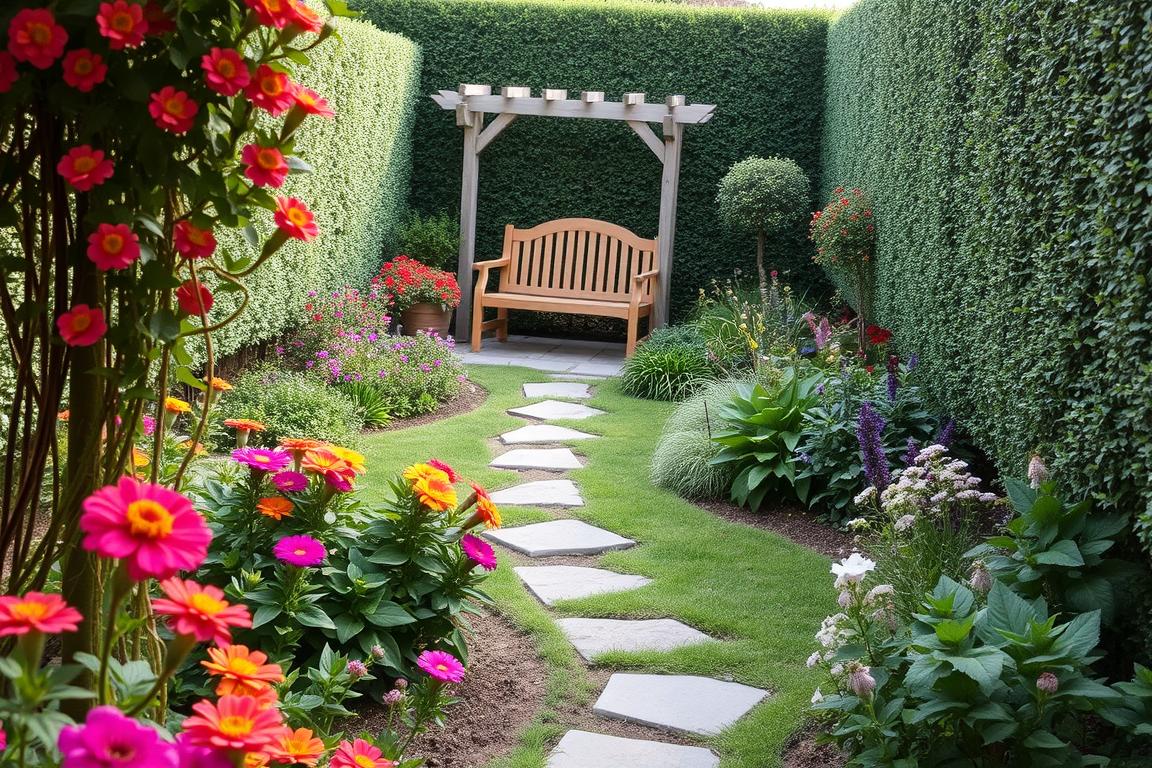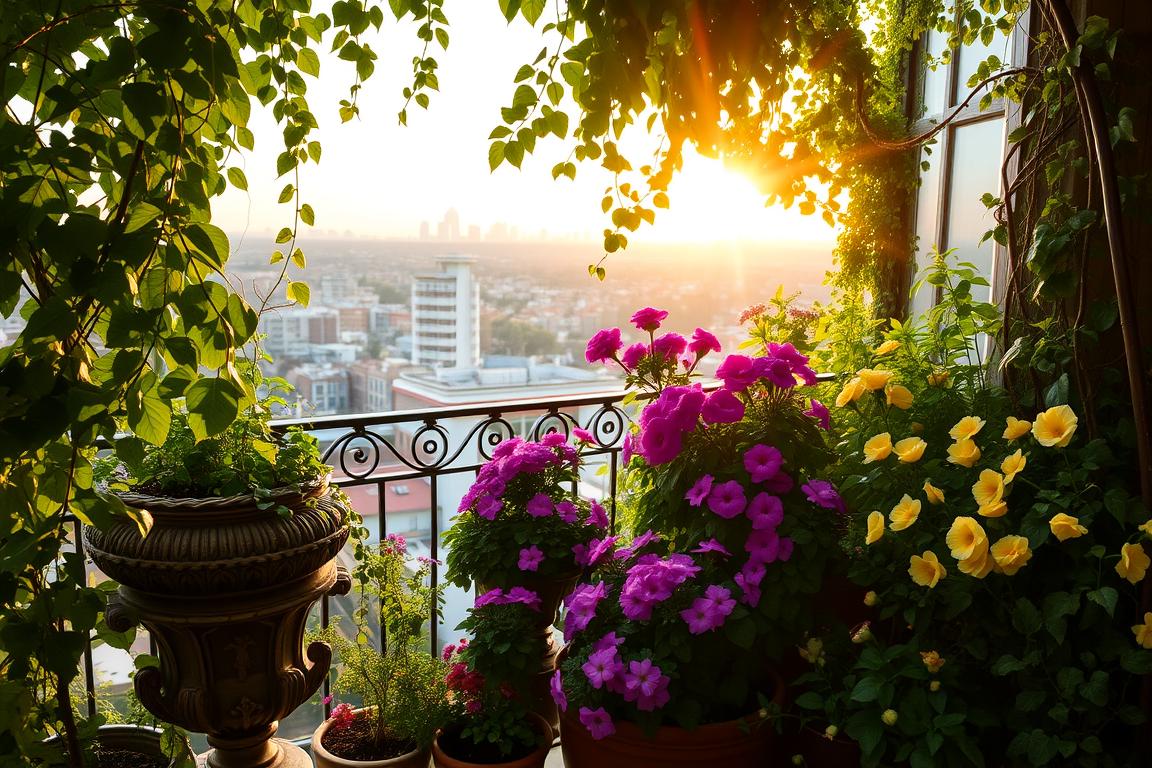Table of Contents
ToggleEssential Tips for Balcony Bird Watching
Enjoying bird watching from your balcony can be a rewarding experience. You can observe beautiful birds without leaving the comfort of your home. To make the most of your balcony bird watching, follow these essential tips that ensure not just a pleasurable pastime, but also a chance to connect with nature.
Choose the Right Location
Your viewpoint is crucial. Consider where you place your seating or spotting area. A spot that overlooks greenery, bird feeders, or water sources will attract more birds. If you can, position your chair or telescope so you have a clear sightline to the areas where birds are likely to visit.

Set Up a Bird Feeder
Bird feeders can be a magnet for local birds. Here are a few tips for setting up your feeder:
- Location: Hang the feeder where you can easily spot visiting birds. Ideally, it’s best to place it near some cover, like shrubs or trees, which can provide safety from predators.
- Types of Feed: Different birds prefer different foods. Use a mix of seeds (sunflower, millet, or thistle) to attract a variety of species. Suet cakes can also bring in woodpeckers and other insect-eaters.
- Regular Cleaning: Keep your feeder clean to prevent diseases. Wash it with hot, soapy water every few weeks, and make sure it’s dry before refilling.
Create a Bird-Friendly Environment
Making your balcony bird-friendly will invite them to visit more often. Here’s how:
- Add Plants: Potted plants with flowers or fruits will not only beautify your balcony but also attract pollinators and birds. Consider native plants that provide seeds or nectar.
- Water Source: Birds need water, too! A small birdbath can attract them, especially in dry weather. Change the water regularly to keep it fresh.
Be Patient and Observant
Bird watching requires patience. Here are tips to enhance your observational skills:
- Quietness: Keep noises to a minimum. Sudden loud sounds can scare birds away, so avoid playing loud music or having loud conversations while you watch.
- Time of Day: Early mornings or late afternoons are the best times for bird activity. Birds are more likely to be out and about during these periods, searching for food.
Use the Right Equipment
Investing in some good equipment can elevate your bird watching experience. Consider the following:
- Binoculars: A pair of binoculars will help you see birds up close without disturbing them. Look for a magnification of 8x or 10x with a wide field of view.
- Field Guide: A field guide or a bird identification app can help you recognize different species and learn about their behavior.
Engage With the Birding Community
Joining local bird watching groups or online communities can enhance your experience. You can learn valuable insights and share your observations. Plus, connecting with fellow birders may lead to events, such as guided tours, where you can discover more about bird watching.
Document Your Sightings
Keeping a bird journal can be both fun and fulfilling. Write down the species you see, along with the date and time. This practice can help you observe seasonal trends and bird movements. You may even consider taking photographs to complement your notes!
By implementing these essential tips for balcony bird watching, you can enjoy the wonders of nature right from your home. Enjoy your time in the fresh air, embrace the tranquility, and most importantly, have fun observing our feathered friends!
The Best Bird Species to Spot from Your Balcony
Enjoying bird watching from your balcony can be a relaxing and rewarding experience. With just a little effort, you can attract a variety of beautiful birds right outside your home. Here’s a look at some of the best bird species that you can spot from your balcony, along with tips on how to encourage their visits.

Common Feeder Birds
One of the easiest ways to draw birds is by setting up feeders. Here are some common feeder birds that are often spotted:
- House Sparrow: A familiar sight across many cities, these small, social birds are easy to attract with both seeds and crumbs.
- American Goldfinch: Known for their bright yellow plumage, goldfinches enjoy thistle and sunflower seeds.
- Cardinal: The male cardinal’s vibrant red feathers make them stand out. They love sunflower seeds and berries.
- Blue Jay: With their striking blue and white feathers, blue jays are known for their intelligence. They enjoy peanuts and seeds.
- Mourning Dove: These gentle birds often visit feeders and prefer seeds, especially millet.
Butterflies and Pollinators
Although not birds, attracting butterflies to your balcony can enhance your bird-watching experience. Many birds feast on these colorful insects. To attract butterflies:
- Plant flowers like nectar-rich zinnias and marigolds.
- Include milkweed, which is essential for attracting monarch butterflies.
- Leave some decaying fruit outside to attract bugs, which in turn, attract birds.
Birds of Prey and Other Spectacular Sightings
Depending on your location, you might be lucky enough to spot larger birds. Here are a few:
- Red-tailed Hawk: Often seen soaring in the sky, their impressive wingspan and distinctive call make them a thrilling sight.
- American Kestrel: This small falcon can often be seen perched, hunting for insects and small animals in open spaces.
- Osprey: If you live near a body of water, Ospreys are often spotted fishing and can be a stunning sight from your balcony.
Songbirds for a Melodic Experience
Songbirds not only provide a visual treat but also fill the air with music. Here are some species to look for:
- Common Yellowthroat: Known for their distinctive “witchity, witchity” call, these warblers tend to hide in dense vegetation.
- Eastern Bluebird: Their bright blue feathers and melodic songs make them a joy to watch.
- Common Blackbird: Displaying glossy black feathers, these birds are known for their beautiful singing and often visit gardens.
Tips for Attracting Birds
To maximize your bird-watching experience, keep these tips in mind:
- Feeders: Choose a variety of bird feeders and seeds. Different birds prefer different feeds.
- Water Source: A small birdbath can attract many species. Ensure it’s filled with fresh water.
- Nesting Boxes: Consider putting up birdhouses to encourage nesting right near your balcony.
- Native Plants: Planting native flowers, shrubs, and trees can provide natural food sources and shelter for birds.
Remember, patience is key. Observe the birds in their natural behavior, and enjoy the calm that bird watching brings. With proper care and a little creativity, your balcony can become a haven for avian visitors. Keeping the environment clean and providing a safe space will make your balcony a go-to spot for the feathered friends in your area. Happy birding!
Creating a Bird-Friendly Environment on Your Balcony
Bird watching can be an incredibly rewarding hobby, and you don’t need a vast backyard to enjoy it. With a bit of thought, you can create a bird-friendly environment right on your balcony. Here are some practical tips to transform your space into a welcoming haven for avian visitors.
Choosing the Right Plants
Selecting the right plants is essential. Consider incorporating a mix of native plants and herbs. Native plants provide the best food and shelter for local birds. Here are some great options:
- Wildflowers: These attract insects, which many birds feed on.
- Berry-producing shrubs: Blueberries, raspberries, and elderberries are favorites.
- Hanging plants: Ferns and flowering plants that attract pollinators will entice birds.
Place pots at varying heights to mimic natural environments. This diversity in plant life enhances the attractiveness of your balcony.
Providing Water Sources
Birds need water for drinking and bathing. A simple birdbath can make a big difference. Here are some ideas for water sources:
- Birdbath: Choose a shallow dish that is easy for birds to access.
- Water fountain: A small solar-powered fountain offers flowing water, which is often more appealing.
- Containers: Even small, shallow containers can provide water. Change it daily to keep it fresh.
Position your water source near plants to create a safe environment where birds can feel secure.
Offering Food Options
Feeding birds is one of the most effective ways to attract them to your balcony. Invest in quality bird feeders to entice various species.
- Seed feeders: Use sunflower seeds, nyjer seeds, or mixed birdseed for a variety of birds.
- Suet feeders: These attract woodpeckers and other insect-eaters.
- Platform feeders: Great for offering fruits and nuts, attracting larger birds.
Be mindful of the feeder’s location. Place it where you can see it but also ensure it’s safe from predators.
Creating Shelter
Birds seek shelter to feel safe. By ensuring your balcony has cozy spots, you can make it a preferred stop for these creatures. Here’s how:
- Dense foliage: Plants with dense leaves offer cover from predators.
- Cubby spaces: Use decorative logs or traditional birdhouses if space permits.
- Perches: Install a couple of small branches or dowels for resting spots.
Birds appreciate privacy, so avoid overly open spaces while still keeping areas visible for your enjoyment.
Maintaining Cleanliness
A clean balcony is crucial for the health of visiting birds. Regular maintenance keeps your area welcoming. Here’s what to do:
- Clean feeders: Wash them weekly to prevent mold and spoilage.
- Change water regularly: Make sure water sources are fresh.
- Remove debris: Clear out fallen seeds, feathers, and droppings to prevent disease.
Creating a hygienic environment will ensure your balcony remains bird-friendly and inviting.
Reducing Hazards
Birds can face many dangers, even on a balcony. Here are some tips to reduce risks:
- Avoid reflective surfaces: Use curtains or window films to minimize bird strikes.
- Limit access to pets: Keep cats and other pets away from the balcony while birds are feeding or bathing.
By staying vigilant, you can help protect your feathered friends as they visit your balcony.
By following these strategies, you can create a bird-friendly environment on your balcony, making it a vibrant spot for both you and the delightful birds that will come to visit. With a little effort, you can enjoy the beauty of nature just outside your window.
Tools and Equipment for Optimal Bird Watching
If you’re aiming to enhance your bird watching experience, having the right tools and equipment is essential. Various gadgets and gear can make spotting and identifying birds much easier. Below, we’ll explore some of the top recommended tools that every bird watcher should consider. Whether you’re a beginner or a seasoned bird enthusiast, these items can elevate your adventures.
Binoculars
Quality binoculars are the most critical tools in bird watching. They allow you to see finer details of birds without disturbing them. When choosing binoculars, consider:
- Magnification: Look for models with 8x to 10x magnification.
- Lens diameter: A wider lens (like 42mm) captures more light for better visibility.
- Field of view: A wider field offers better tracking of moving birds.
- Weight: Lighter models are easier to carry during long outings.
Bird Field Guide
Having a reliable bird field guide can help you identify different species effortlessly. Choose a guide that is:
- Region-Specific: Focus on a guide featuring birds from your area.
- Illustrative: Books with real-life images aid in proper identification.
- Up-to-Date: Ensure the guide includes recent species information.
Camera Setup
If you love capturing the beauty of birds, investing in a good camera setup is key. Here are some accessories you might consider:
- Digital Camera: Choose a DSLR or mirrorless camera with a good range of lenses.
- Telephoto Lens: A lens with a long focal length (200mm or more) will help you get close shots.
- Tripod: A stable tripod is essential for clear images, especially at low light conditions.
- Camera Bag: A weather-resistant bag will protect your equipment in various conditions.
Notebook or Journal
Keeping a record of your bird sightings can enhance your experience. A field notebook allows you to:
- Document Observations: Write down the date, time, and location of your sightings.
- Sketch Birds: If you’re artistically inclined, a quick sketch can help with identification.
- Note Songs and Calls: Document the sounds of birds that you hear.
Smartphone Apps
Smartphones can serve as powerful tools for bird watchers. Several apps offer functionalities like:
- Identification: Use apps that help recognize species based on your location.
- Bird Calls: Listen to recorded calls to help identify birds by sound.
- Sightings Alerts: Join communities that notify you of rare species spotted nearby.
Comfort and Safety Gear
Bird watching often means spending long hours outdoors, so comfort and safety gear are crucial. Here are some items to consider:
- Hat: A wide-brimmed hat will protect you from the sun.
- Sunscreen: Apply a good quality sunscreen, especially during sunny days.
- Comfortable Footwear: Choose supportive shoes that are suitable for various terrains.
- Insect Repellent: Keep bugs at bay, especially in humid areas.
Bird Feeder and Bath
If you’re unable to venture far but wish to enjoy bird watching from your home balcony, installing a bird feeder and bath can attract various species to your vicinity. Here’s what you need:
- Feeder Types: Consider tube feeders for small birds and platform feeders for larger ones.
- Water Source: A shallow bird bath provides essential hydration and a place for birds to cool off.
- Seed Selection: Purchase a variety of seeds to attract a diverse group of birds.
Having the right tools and equipment can significantly enhance your bird watching experience. Equip yourself well, and you’ll create lasting memories as you connect with nature from your own space. Remember to be patient, respectful of wildlife, and enjoy every moment of your bird watching journey!

Seasonal Changes and Their Impact on Balcony Bird Watching
Bird watching from your balcony can be a delightful hobby that brings you closer to nature. However, the experience can change significantly with the seasons. Each season influences which birds visit your area, their behavior, and how you can engage with them effectively. Understanding these seasonal changes will enhance your balcony bird watching experience.
Spring: A Time of Renewal
Spring is the season of awakening, which means many birds return from their winter homes. During this time, migratory birds like swallows and warblers arrive, bringing colorful sights and melodious songs. To attract these birds:
- Set up bird feeders filled with seeds and suet.
- Plant native flowers and shrubs to create a welcoming environment.
- Provide a water source to keep birds hydrated.
As the weather warms up, you can observe courtship behaviors and nesting activities from your balcony. This is a prime time to capture stunning photos and videos of birds in love.
Summer: A Full Swing of Activity
In the summer, bird activity peaks as nesting continues. You may notice adult birds feeding their young, which can be an exciting sight for any bird watcher. To enhance your experience during the summer months:
- Continue to refill feeders regularly to support growing chicks.
- Maintain a fresh supply of water to attract various species.
- Consider adding birdhouses to provide safe nesting options.
Birds like finches and sparrows will be more active, providing ample opportunities for you to observe their behaviors. Keep your camera ready to capture these precious moments!
Autumn: A Transition Period
As the leaves change color in autumn, bird watching becomes equally captivating. Many species prepare for migration, making this an excellent time to witness flocks gathering and heading south. To make the most of your balcony bird watching in fall:
- Switch to high-energy bird food to support migratory birds.
- Identify which species are likely to pass through your area.
- Observe the changing behavior of the birds as they prepare for their long journeys.
Autumn is often less crowded with bird activity, giving you a chance to appreciate the dwindling flocks as they stop by your balcony for a quick snack.
Winter: Embrace the Chill
Winter can be a quieter time for bird watching, but it also has its charms. Many birds that are year-round residents, such as cardinals and blue jays, become more visible against the stark backdrop of snow. To keep up the bird watching during winter:
- Ensure your feeders are filled and cleaned regularly.
- Include high-fat foods, like peanuts and sunflower seeds, to help them survive the cold.
- Set up heated water dishes to prevent freezing.
Don’t be discouraged by the cold; grabbing a hot drink and watching the birds navigate the wintry landscape can be incredibly rewarding. Plus, the bright colors of winter birds can add a splash of joy to the dreary months.

Bird Watching Tips Throughout the Seasons
To maximize your balcony bird watching experience regardless of the season, keep these tips in mind:
- Be patient and quiet; sudden movements might scare birds away.
- Use binoculars for better viewing, especially for birds in the distance.
- Keep a journal to note down species you see and their behaviors.
Bird watching from your balcony can be a fulfilling and educational experience all year long. Each season brings forth unique opportunities to connect with nature and appreciate the beauty of avian life. Whether you’re enjoying the songs of spring, the hustle of summer, the flocks of autumn, or the vibrant residents of winter, your balcony can be transformed into a bird watching paradise.
Conclusion
Embracing the joys of balcony bird watching can transform your outdoor space into a lively sanctuary. By implementing essential tips, such as maintaining a quiet environment and using bird feeders, you’ll attract a diverse array of bird species right to your doorstep. Whether you’re eager to spot vibrant goldfinches, majestic eagles, or delicate hummingbirds, understanding the best species to observe from your balcony can enrich your experience, offering both excitement and educational opportunities.
Building a bird-friendly environment is crucial. This includes providing water sources, selecting native plants, and ensuring safe perch areas. The more comfortable and welcoming you make your balcony, the more likely birds will visit you regularly, turning every glance outside into a delightful experience.
Having the right tools and equipment enhances your bird-watching adventures. Binoculars, field guides, and cameras can help you capture the stunning details of the birds that come to visit. Simple yet effective, these tools open up a world of observation that can be both relaxing and fulfilling.
As seasons change, so do the types of birds that frequent your balcony. Staying attuned to these seasonal shifts will keep your bird-watching experience fresh and dynamic, allowing you to welcome new species throughout the year.
By integrating these strategies into your balcony bird-watching routine, you create an engaging and enriching hobby. Let the wonder of nature’s winged visitors bring joy, tranquility, and a deeper connection to the world around you. So grab your binoculars, settle in, and enjoy the beautiful tapestry of bird life that unfolds just outside your window.














